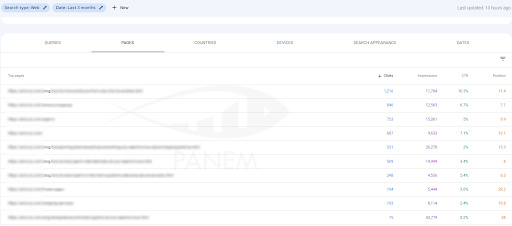PROJECT INPUT DATA
We already had a promotion strategy in place, and completed most of the preparations, but we weren’t able to implement them on the site. But later the process started and we got down to work.
What we had already done by that time:
- Niche and competitor analysis
- Collecting and clustering of the semantics
- Suggesting the website structure
- Designing technical tasks and writing content for service pages
- Acquiring over 100 backlinks
Let’s take a closer look at the process of implementation of our recommendations and nuances that occurred.
TECHNICAL OPTIMIZATION
The client developed a new site taking into account our recommendations concerning its structure and landing pages. For the most part, everything was done according to our advice, but there was one detail to consider: the site had 6 language versions and all of them generated relevant traffic, although not as much as the English version did.
We needed to launch the new site as quickly as possible but other language versions were not ready. As a temporary option, we redirected all language versions to the corresponding English language pages using a 302 redirect in the hope that they won’t fall out of the index while we’ll be preparing the content in other languages. However, the client decided to keep only one language, losing part of the traffic (however, as we discovered later, the total amount of traffic to the site increased, despite only one language version).
With the rest of the technical aspects corrected, the site started getting properly scanned and indexed. We also implemented the Product micro markup, which competitors didn’t have and which made the client’s website stand out on the search results page due to an attractive snippet for all service pages.

COLLECTING AND CLUSTERING SEMANTICS
We had done this research previously, and, therefore, only needed to update the existing queries (we updated the frequency metric and added new queries to clusters), add new semantics for the new services (the client expanded the list of available services), prepare technical tasks for the added services, and, finally, create and publish the content according to these tasks.
Having covered all possible commercial queries, we proceeded to the informational pages. There already were some blog articles on the site, but they didn’t match any relevant queries and, accordingly, didn’t generate any traffic. Our next task was to remove low-quality pages, replacing them with useful and relevant content.
In fact, very few relevant informational queries exist in this niche, so we have expanded the list of blog topics, adding some new ones partially related to the client’s services.
Next, we developed a content plan and began to fill the blog with useful content, gradually removing pages that couldn’t be optimized (i.e., didn’t match any relevant queries).
THE RESULT
So, we added all the service pages, published around a dozen blog articles (and continue doing it), went on working with backlinks and tested different approaches, updated content, worked with SERM, struggled with algorithm updates, etc. SEO is a never-ending race, but patience is always rewarded — the number of clicks per day doubled.
This is a GSC screenshot showing clicks and impressions for the last year:

This is a GSC screenshot showing top pages for the last 3 months:

General data from Ahrefs:

This is an Ahrefs screenshot demonstrating the distribution of traffic and backlinks:

This Ahrefs screenshot shows the distribution of search queries:

This screenshot demonstrates how rankings for some queries have been changing:
